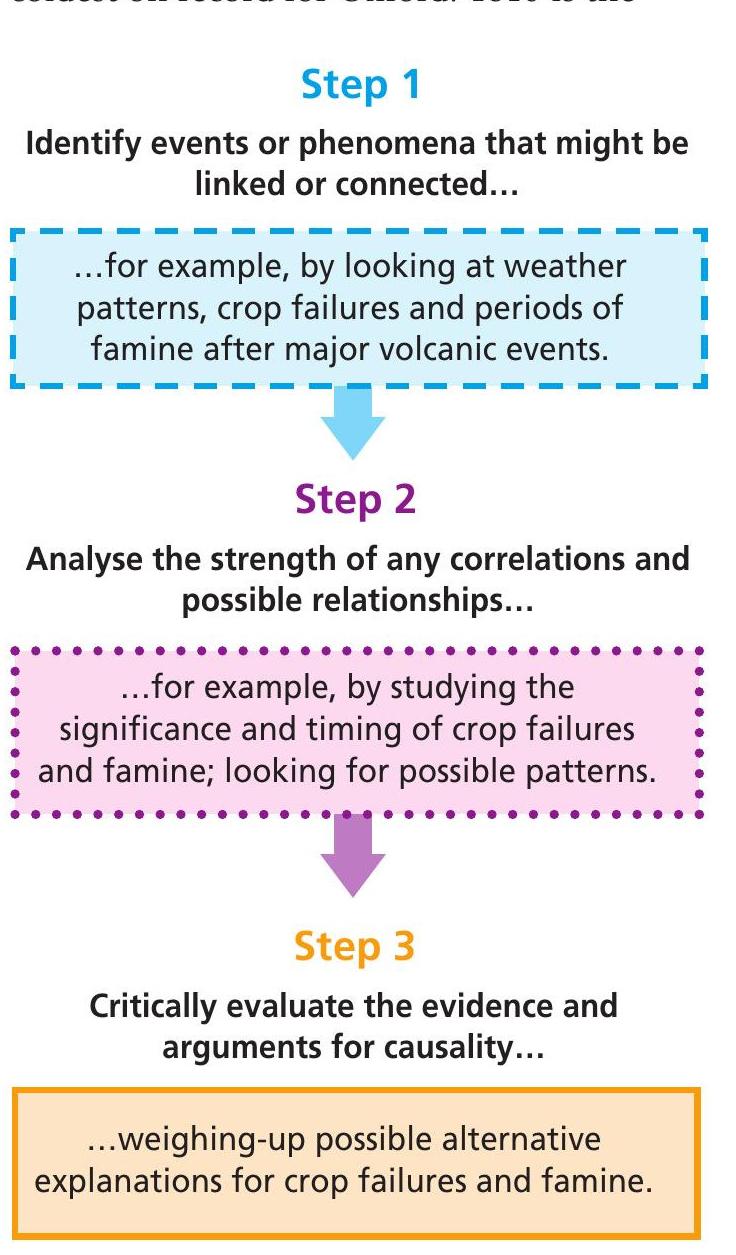
Thinking synoptically means ‘joining the dots’ between different topics and information — for example, by linking your studies of tectonic and volcanic hazards with ideas about globalisation. During your A-level geography course, you will become more skilled at spotting how different places, societies and processes are connected as parts of even larger and more complex human and environmental systems. In line with this, it’s expected that good A-level geography essays will discuss ‘logical and relevant connections/relationships’ (Pearson Edexcel mark scheme) or ‘links between knowledge and understanding in different contexts’ (AQA mark scheme).
A developed analysis of topic links goes well beyond just identifying that different phenomena or events could be connected, however. Noticing that two things happened at about the same time is only the first step; we also want to know about the strength of any relationship and the extent to which a direct causal relationship exists. It is always important to remember that correlation does not necessarily imply causality. Just because two events coincided, it does not mean that one caused the other. There might be other processes at work too (see Figure 1, below).
Your organisation does not have access to this article.
Sign up today to give your students the edge they need to achieve their best grades with subject expertise
Subscribe



